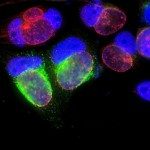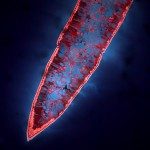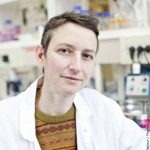Lien vers Pubmed [PMID] – 21078856
Infect. Immun. 2011 Feb;79(2):571-80
Chlamydiae are Gram-negative, obligate intracellular pathogens that replicate within a membrane-bounded compartment termed an inclusion. Throughout their development, they actively modify the eukaryotic environment. The type III secretion (TTS) system is the main process by which the bacteria translocate effector proteins into the inclusion membrane and the host cell cytoplasm. Here we describe a family of type III secreted effectors that are present in all pathogenic chlamydiae and absent in the environment-related species. It is defined by a common domain of unknown function, DUF582, that is present in four or five proteins in each Chlamydiaceae species. We show that the amino-terminal extremity of DUF582 proteins functions as a TTS signal. DUF582 proteins from C. trachomatis CT620, CT621, and CT711 are expressed at the middle and late phases of the infectious cycle. Immunolocalization further revealed that CT620 and CT621 are secreted into the host cell cytoplasm, as well as within the lumen of the inclusion, where they do not associate with bacterial markers. Finally, we show that DUF582 proteins are present in nuclei of infected cells, suggesting that members of the DUF582 family of effector proteins may target nuclear cell functions. The expansion of this family of proteins in pathogenic chlamydiae and their conservation among the different species suggest that they play important roles in the infectious cycle.


